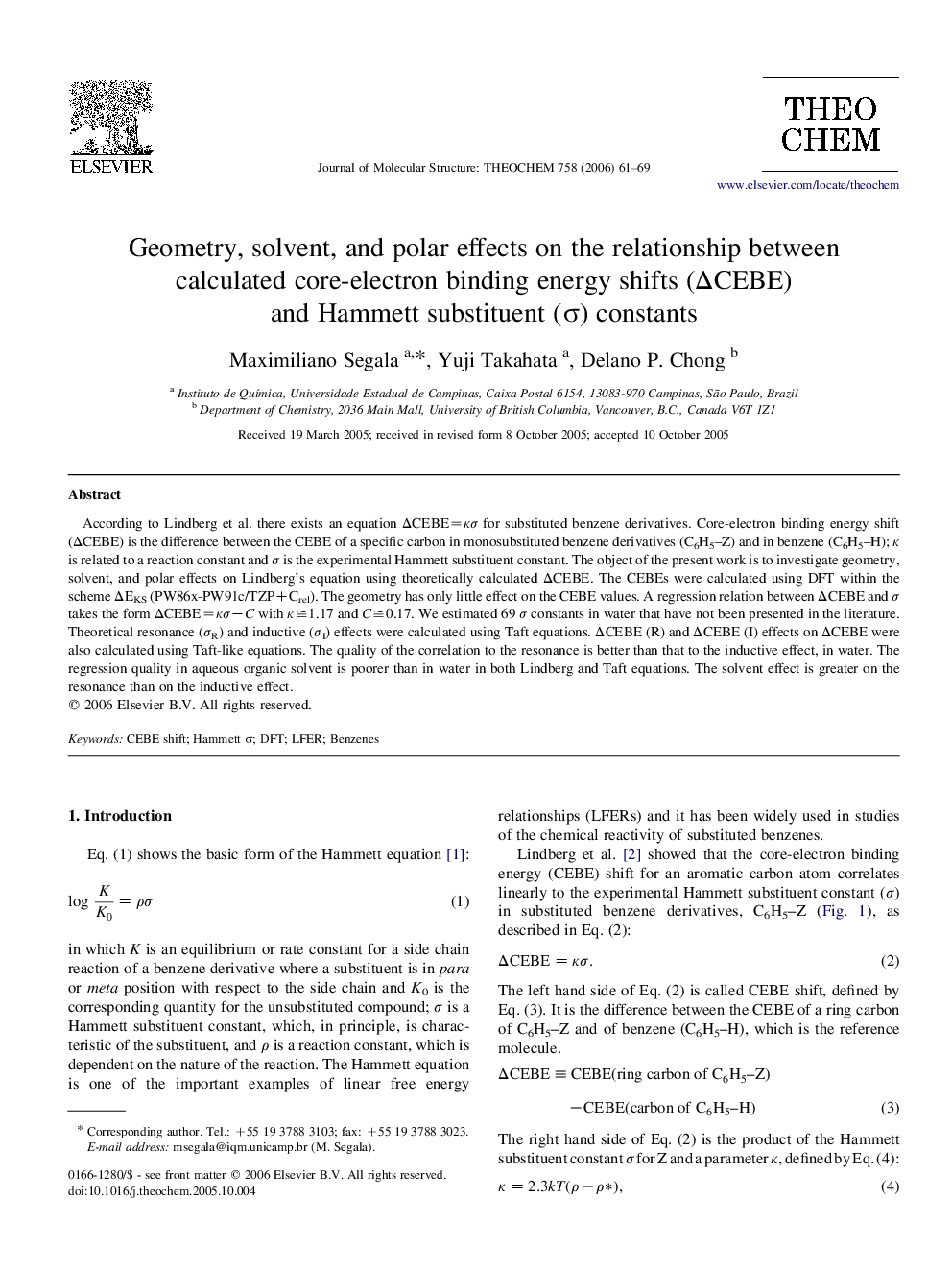| Article ID | Journal | Published Year | Pages | File Type |
|---|---|---|---|---|
| 5418776 | Journal of Molecular Structure: THEOCHEM | 2006 | 9 Pages |
Abstract
According to Lindberg et al. there exists an equation ÎCEBE=ÎºÏ for substituted benzene derivatives. Core-electron binding energy shift (ÎCEBE) is the difference between the CEBE of a specific carbon in monosubstituted benzene derivatives (C6H5-Z) and in benzene (C6H5-H); κ is related to a reaction constant and Ï is the experimental Hammett substituent constant. The object of the present work is to investigate geometry, solvent, and polar effects on Lindberg's equation using theoretically calculated ÎCEBE. The CEBEs were calculated using DFT within the scheme ÎEKS (PW86x-PW91c/TZP+Crel). The geometry has only little effect on the CEBE values. A regression relation between ÎCEBE and Ï takes the form ÎCEBE=κÏâC with κâ
1.17 and Câ
0.17. We estimated 69 Ï constants in water that have not been presented in the literature. Theoretical resonance (ÏR) and inductive (ÏI) effects were calculated using Taft equations. ÎCEBE (R) and ÎCEBE (I) effects on ÎCEBE were also calculated using Taft-like equations. The quality of the correlation to the resonance is better than that to the inductive effect, in water. The regression quality in aqueous organic solvent is poorer than in water in both Lindberg and Taft equations. The solvent effect is greater on the resonance than on the inductive effect.
Related Topics
Physical Sciences and Engineering
Chemistry
Physical and Theoretical Chemistry
Authors
Maximiliano Segala, Yuji Takahata, Delano P. Chong,
